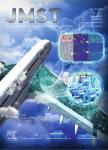Bioinspired tungsten-copper composites with Bouligand-type architectures mimicking fish scales
Bioinspired tungsten-copper composites with Bouligand-type architectures mimicking fish scales作者机构:Shi-Changxu Innovation Center for Advanced MaterialsInstitute of Metal ResearchChinese Academy of SciencesShenyang 110016China School of Materials Science and EngineeringUniversity of Science and Technology of ChinaHefei 230026China Department of Materials Science and EngineeringUniversity of California BerkeleyBerkeleyCA94720USA Jihua LaboratoryFoshan 528200China School of Materials Science and EngineeringXi’an University of TechnologyXi’an 710048China
出 版 物:《Journal of Materials Science & Technology》 (材料科学技术(英文版))
年 卷 期:2022年第96卷第1期
页 面:21-30页
核心收录:
学科分类:08[工学] 0805[工学-材料科学与工程(可授工学、理学学位)] 080502[工学-材料学]
基 金:the financial support by the National Key R&D Program of China under grant number 2020YFA0710404 the National Natural Science Foundation of China under grant number 51871216 the KC Wong Education Foundation(GJTD-2020-09) the Liao Ning Revitalization Talents Program the State Key Laboratory for Modification of Chemical Fibers and Polymer Materials at Donghua University the Opening Project of Jiangsu Province Key Laboratory of High-End Structural Materials under grant number hsm1801 the Youth Innovation Promotion Association CAS support from the Multidisciplinary University Research Initiative to University of California Riverside,funded by the Air Force Office of Scientific Research(AFOSR-FA9550–15–1–0009)and subcontracted to the University of California Berkeley
主 题:Bouligand structure Tungsten-copper composites Fish scales Structural reorientation Bioinspired designs
摘 要:The microscopic Bouligand-type architectures of fish scales demonstrate a notable efficiency in enhancing the damage tolerance of materials;nevertheless,it is challenging to reproduce in *** bioinspired tungsten-copper composites with different Bouligand-type architectures mimicking fish scales were fabricated by infiltrating a copper melt into woven contextures of tungsten *** composites exhibit a synergetic enhancement in both strength and ductility at room temperature along with an improved resistance to high-temperature *** strengths were interpreted by adapting the classical laminate theory to incorporate the characteristics of Bouligand-type *** particular,under load the tungsten fibers can reorient adaptively within the copper matrix by their straightening,stretching,interfacial sliding with the matrix,and the cooperative kinking deformation of fiber grids,representing a successful implementation of the optimizing mechanisms of the Bouligand-type architectures to enhance strength and *** study may serve to promote the development of new high-performance tungsten-copper composites for applications,e.g.,as electrical contacts or heat sinks,and offer a viable approach for constructing bioinspired architectures in metallic materials.



